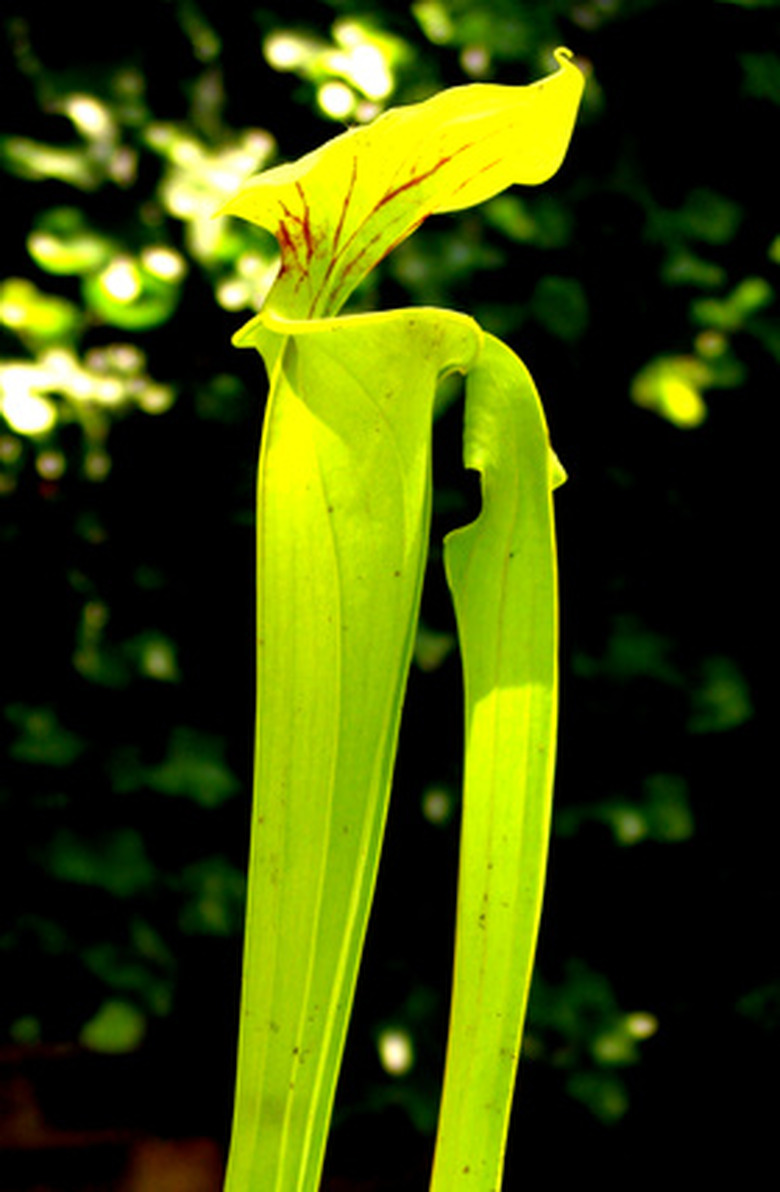Carnivorous Plants Of Texas
Because carnivorous plants grow in soggy, nutrient-poor soil or waters, they have developed methods to trap and digest insects. These plants might sound as though they are rare and tropical, but there are more than 600 varieties of carnivorous plants, 14 of which grow in Texas.
Pale Pitcher Plant
The pale pitcher plant (Sarracenia alata) is a very slender and tall plant that can reach heights of 26 inches or more. It has yellow-green leaves with red veins and produces pale yellow flowers. It is a pitfall plant, which means its leaves curl to produce deep pools of digestive enzymes. The top of the trap is covered with a waxy layer that prevents insects from escaping. It grows in bogs, swamps and other wet areas.
- Because carnivorous plants grow in soggy, nutrient-poor soil or waters, they have developed methods to trap and digest insects.
- The pale pitcher plant (Sarracenia alata) is a very slender and tall plant that can reach heights of 26 inches or more.
Small Butterwort
The small or dwarf butterwort (Pinguicula pumila) grows about 4 inches high, with a slightly smaller width. Its yellow-green curled leaves are covered with small hairs and a thick, sticky mucilage that it uses to catch insects. It grows in moist areas in open areas and in thin woods.
Sundew
Although only two varieties of sundew are found in Texas, they are very different from each other. The dwarf sundew (Drosera brevifolia) has wedge-shaped leaves and is red or reddish-purple in color. The pink sundew (Drosera capillaris) has spoon-shaped leaves and appears red in strong sunlight but lime-green with red tentacles under normal light. Both species are small (about 2 to 3 inches wide) and flat and grow in bogs or wet areas. Leaves are covered with hairy tentacles that secrete a sticky fluid that the plant uses to catch its prey. Once caught, the leaves of the sundew will slowly curl around the insect in order to digest it.
- The small or dwarf butterwort (Pinguicula pumila) grows about 4 inches high, with a slightly smaller width.
- The pink sundew (Drosera capillaris) has spoon-shaped leaves and appears red in strong sunlight but lime-green with red tentacles under normal light.
Bladderworts
Bladderworts can be found growing in the water or in very wet soil. They are rootless and free-floating plants that range in size from a few inches to a few feet tall. Above the surface, they produce tiny flowers on tall stalks in a variety of colors, usually yellow or violet. However, it is below the surface that the carnivorous action occurs. Bladderworts have tiny bladders attached to their leaves that, when triggered by sensitive hairs, suck in their prey.
Ten varieties of bladderwort can be found in Texas: leafy (U. foliosa L.), southern (U. juncea), horned (U. cornuta Michx.), humped (U. gibba L.), swollen (U. inflata Walter), common (U. macrorhiza), eastern purple (U. purpurea), little floating (U. radiata Small), striped (U. striata), and zigzag (U. subulata L.).
- Bladderworts can be found growing in the water or in very wet soil.
- Ten varieties of bladderwort can be found in Texas: leafy (U. foliosa L.), southern (U. juncea), horned (U. cornuta Michx.
- ),
